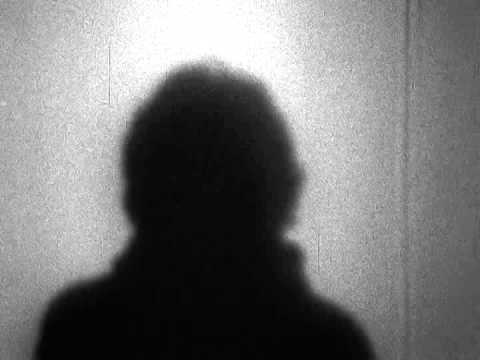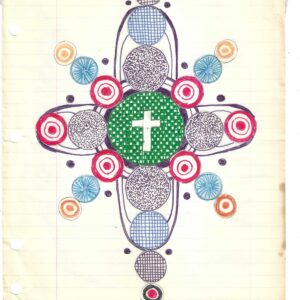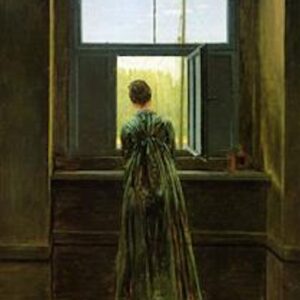The experimental filmmaker Hollis Frampton once made a short film called Manual of Arms in which he filmed various of his friends in the artworld of New York City in the mid 1960s. It is a shaky film, hand held, in black and white and with, let’s call it… unpredictable lighting. There is no script or story. There are just people, doing whatever they decide to do in front of the camera. I should also mention that there is no sound in the film. Also there are a lot of quick cuts and odd angles. Many of the people in the film look awkward and uncomfortable. It’s a good film. Boring as all hell but also, as with these sorts of art projects, not boring at all when you surrender yourself to the experience of watching the film on its own terms. Thrilling, actually, after the boredom wears off.
About ten minutes into the film a woman appears. She is lit dramatically. Her large shadow dances on the wall behind her. She is smiling and laughing. She is obviously chatting away with Hollis (or whoever) as the footage is being shot, though we have no idea what she is actually saying. More than anyone else in the film, she is having a grand time of it. She is funny and engaging and, I don’t know, alive.
This is Lee Lozano. She was painting and drawing in the mid 1960s in New York City. Her work was being shown in galleries and getting good reviews. She was making it as an artist in the big city. As the Sixties progressed, she moved more and more into a kind of Minimalist abstraction with her paintings. Also, she started to do things, performances, actions, whatever you want to call them. She did a piece where she put a jar out with some money in it and you could either take money out or put money in. Stuff like that.
Then, she declared that she was doing a piece called Boycott Women. She stopped talking to women completely. She was quite involved with talking to women before the piece. She hung out with people like Lucy Lippard and with women of the era who considered themselves both artists and participants in what is now often called second wave feminism. The Boycott Women piece was supposed to last a few weeks. Instead it lasted for the rest of her life.
In 1969 she also began what she called her General Strike Piece. She started withdrawing from the artworld completely, documenting the process as she did. She kept notes as she visited various galleries and museums for the last time. She stopped exhibiting her own work. She stopped making new work.
In 1972 she left New York City. She moved to Texas. She stopped the documentation process. Was she still performing this piece, the General Strike? How do we answer that question? Lee Lozano lived in Texas, mostly in Dallas, I think, as far as I am able to figure out. There is little to no information. She didn’t want there to be information. But she lived in Texas. She lived in and around Dallas. Dallas, of all places.
She continued her boycott of women, though I’ve read that she did speak with her mother sometimes. Otherwise she would refuse. As far as we know. She did this into the late 1990s. Then she got cancer. She died in 1999. She was buried in Dallas in an unmarked grave.
+++
The following lines are from a book by the Swiss writer Max Picard called The World of Silence. “In the pictures of the old masters, people seem as though they have just come out of the opening in a wall; as if they had wriggled their way out with difficulty. They seem unsafe and hesitant because they have come out too far and still belong more to silence than to themselves. They stop and wait for another opening to appear in front of them through which they can get back again to the silence. It seems that in the silence the movements of these people meet before the people themselves meet. If you look at a group of these people together in a picture by one of the old masters—people who have each as it were just stepped out of the wall of silence—it is as though they were all gathered together in a waiting room, waiting for the great opening of silence to appear before them through which they can all disappear again.”
Does the silence just call some people, call them away? When those people are called by the silence is it a triumph, or is it a tragedy? Is it neither of those things?
Did Lee Lozano see herself as working on this great project, this great refusal all the way to her dying day? Had she forgotten about it by then? Was she just living life, and all the New York City Artist stuff just seemed like a bad dream?
I think she always had a little smile on her face all the way to the end. I think she knew she was doing something extraordinary, that she had turned the simple act of living a normal life in Dallas into a strange and challenging and profound work of some kind. I think she was doing her own version of Hesychasm all the way through. But maybe not. That’s the thing. How can one know for sure? The radicality of her act means that It is impossible to know for sure. That’s the true triumph of the silence. A silence more profound, maybe, even than that of Anthony, or Saint John the Dwarf, or any of those other Desert Fathers and Mothers for the simple reason that there is no doubt that the Desert Fathers and Mothers were making a refusal, some kind of great refusal. But Lee Lozano’s refusal was so deep as to refuse even the refusal, to put the refusal into the realm of silence. Maybe.
What might it have been like to meet Lee Lozano on the streets of Dallas in, say, 1983? Would there have been any clues, any signs that this person was not just any person walking down the street but involved in a great and disturbing performance, an artwork in which all other artworks, all works of any kind were being put into question. Would one have seen something shining on her face or just seen nothing at all?
Morgan Meis has a PhD in Philosophy and is a founding member of Flux Factory, an arts collective in New York. He has written for n+1, The Believer, Harper’s Magazine, The Virginia Quarterly Review and is a contributor at The New Yorker. He won the Whiting Award for non-fiction in 2013. Morgan is also an editor at 3 Quarks Daily, and a winner of a Creative Capital | Warhol Foundation Arts Writers grant. A book of Morgan’s selected essays can be found here. His new book from Slant is The Drunken Silenus. He can be reached at morganmeis@gmail.com.





